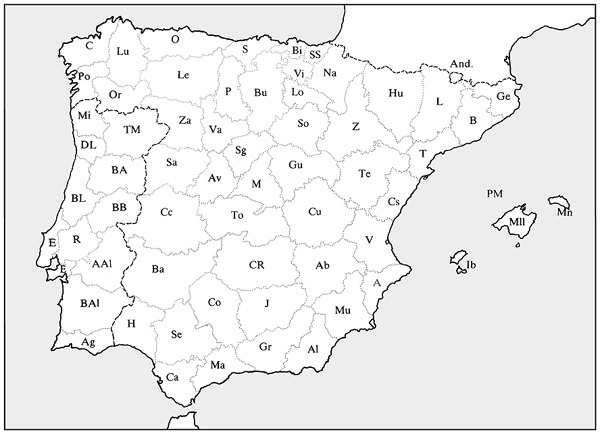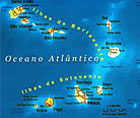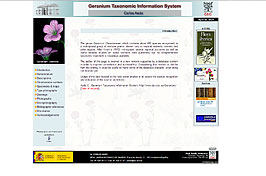|
Flora Iberica aims at facilitating
natives or naturalized vascular plant identifications for Iberian
Peninsula and Balearic islands. Thus, most of the information supplied
refers to characteristics that differentiate plants from each other. The
description structure is designed for an easy comparison. The work was
conceived with diagnostic purposes rather than extensively descriptive.
The fact, that some genera have a very complex taxonomy has made necessary
the long descriptions which has meant, somehow, the lost of homogeneity.
As regards to the angiosperms, for the higher
taxonomic ranks, including families, we almost always follow the STEBBINS
judgment, Flowering plants - Evolution above the species level (1974).
We part from the system in question in some cases. In the first place,
when included Fumariaceae into Papaveraceae - as subfamily of Fumrioideae
– and also in the key, considering Asclepiadaceae, Lilaeaceae, Posidoniaceae
and Amaryllidaceae independent of each other. Also, we part from the system to
accept as various Viscaeae and Loranthaceae families in Vol. VIII.
Excluding exceptions, the descriptive terminology
fits FONT QUER's definitions (Diccionario de Botánica, 1953).
We try to avoid any terms that may be uncomfortable for the Portuguese users.
The genera descriptions are mainly refer to
plants of Iberian and Balearic territory. Likewise, the keys (both genera
and species keys) are also based on direct observation of Iberian and Balearic plants.
As regards to the names of genera, in the
known authorship, is indicated “nom. cons.” (The name which should be conserved).
We also have decided to indicate, in brackets, the etymology of such names
and other information about the grammar. For the epithets, the information
is in appendix IV of this web site.
Information that we provide
About each species or subspecies, we provide the following information:
1.º Correct name (according to the
International Code of Botanical Nomenclature), authors involved, and the
bibliographic reference that provides legal validity. In the appendices
I, II and III of this web site appears respectively: abbreviation of author’s
names, periodic publications and autonomous works (again according to
international rules). Next, at the right margin, appears the pronunciation
of the epithets and, moreover, beginning with a capital letter if these are
apposition nouns. In the scientific name index appears, in bold type, the
considered correct scientific names from the volumes of Flora Iberica.
2.º Synonyms. In the body of the
work shall not be correct names that have appeared at the Basic Floras
in the specific and sub specific rank, and more someone else who deserves
it for another reason, according to editors. When there is a basionym,
this appears in the first position with full bibliographic citation.
We have made great efforts so that our index collects all useful synonyms,
even in the range of varieties. In the index of scientific names are given,
in bold type, synonyms appeared in the volumes of Flora Iberica.
3.º Loco typical Indication.
Literally transcribed from the part of the protologue referred to the
geographical data and, if necessary, added an explanatory word or small sentence.
4.º Iconography. This item can
contain two types of references: those that refer to icons of certain
quality published works, if possible accessible; and those that refer
to our original pictures - at least, one for genus- as well as another
an explanatory figure. Iberian and Balearic endemism have priority that
haven’t been drawn successfully and published in an accessible work.
Index of iconographies is related taxa which gives an original drawing
in the volumes of Flora Iberica.
5.º Description. Seeks to be concise
and functional, even though homogeneity is lost. We try to show every
important diagnostic character.
6.º Chromosome numbers. They are
indicated if its known and referring preferment to Iberian counts.
We only go to recounts conducted in extra-Iberian plants in the case
that there are no known Iberian counts as well as that differ from the
extra-Iberian plants.
7.º Habitat. We refer to it so
that the flora is easily understood by non expert users. Specifically
and deliberately, we have renounced the use of phytosociological terminology,
not only because of internal problems (lack of uniformity and stability),
but also for the undeniable fact that so many taxonomists are unaware of it.
8.º Flowering period. Our data
related to bloom should not be understood strictly and absolutely,
because it depends heavily on multiple factors, in very large and heterogeneous
territory. We point out as limits first and last months indicated in labels of the available specimens.
9.º Geographical distribution.
It shows, schematically, the total distribution of each taxon, and then
specifies the peninsular and/or balearic distribution in short sentence,
details, finally, the provinces, both Spanish and Portuguese, and islands
where their presence is evident from the Basic Herbal material or, in
genera without serious taxonomic problems, the firm testimony of the
consultants and, occasionally only by the testimony of a specialist in
genera or conflict groups, or by reliable citation although unsupported
by any specimen. The brackets show that this is a purely allochthonous
taxon in the province. In a question as regards geographical doubts and
the sign † indicates local extinction of the plant. The symbol ● indicates
the endemic taxa. Here are the codes used for Spain and Portugal, in alphabetical order:
| España (Esp.) |
| A |
Alicante |
Gu |
Guadalajara |
Mn |
Menorca |
| Ab |
Albacete |
H |
Huelva |
Ib |
Ibiza |
| Al |
Almería |
Hu |
Huesca |
Po |
Pontevedra |
| Av |
Ávila |
J |
Jaén |
S |
Cantabria (Santander) |
| B |
Barcelona |
L |
Lérida (Lleida) |
Sa |
Salamanca |
| Ba |
Badajoz |
Le |
León |
Se |
Sevilla |
| Bi |
Vizcaya |
Lo |
La Rioja (Logroño) |
Sg |
Segovia |
| Bu |
Burgos |
Lu |
Lugo |
So |
Soria |
| C |
La Coruña (A Coruña) |
M |
Madrid |
SS |
Guipúzcoa |
| Ca |
Cádiz |
Ma |
Málaga |
T |
Tarragona |
| Cc |
Cáceres |
Mu |
Murcia |
Te |
Teruel |
| Co |
Córdoba |
Na |
Navarra |
To |
Toledo |
| CR |
Ciudad Real |
O |
Asturias (Oviedo) |
V |
Valencia |
| Cs |
Castellón |
Or |
Orense (Ourense) |
Va |
Valladolid |
| Cu |
Cuenca |
P |
Palencia |
Vi |
Álava |
| Ge |
Gerona (Girona) |
PM |
Islas Baleares |
Z |
Zaragoza |
| Gr |
Granada |
Mll |
Mallorca |
Za |
Zamora |
| Portugal (Port.) |
| AAl |
Alto Alentejo |
DL |
Douro Litoral |
| Ag |
Algarve |
E |
Estremadura |
| BA |
Beira Alta |
Mi |
Minho |
| BAl |
Baixo Alentejo |
R |
Ribatejo |
| BB |
Beira Baixa |
TM |
Trás-os-Montes |
| BL |
Beira Litoral |
|
|

10.º Vernacular names. Then, if appropriate, list the mainland
and island names that are most commonly applied to the plant, meaning not only the vernacular name
used by the common people, but any other admitted, one way or another, in the language that
concern us. It is clear that we do not aspire to be exhaustive at this point and we've barely
done any research of its own: our information is essentially acknowledged. And since a single
name may have many local variations; so will attend, within each group, the more widespread.
As is logical, it is noted if the names in question belong to the Castilian language, Catalan,
Euskera, Galician and Portuguese, the continent or not, without much distinction. It would be that
our flora, and not only in this domain, give rise to more perfect synthesis or compilation, in its
promising full investigatory scope.
11.º Observations. Often in short paragraph autonomous,
always adding and concise information on other properties. Occasionally precede or follow some
comments, mostly about taxonomic nature: in them we have referred more than once alleged varieties,
range which treatment is mixed here, what was necessary to point out.
12.º Species must be found. We indicated in this item species
with probable presence in our territory, although not confirmed.
13.º Hybrids, whose existence in the territory of the Flora is
firm, just listed after each genus.
The critical work, and the “novitate” to be imposed, in the opinion of
the authors, is being published in most of the work ahead. In general, part of our
Notulae taxonomicae, chorologicae,
nomenclaturales, bibliographicae aut philologicae in opus "Flora
iberica" intendentes, hosted by the Annals of the Botanical Garden of Madrid, whose relationship
is part of the Appendix V of this web site. The late-breaking news, we try to minimize,
are published as appéndix VI.
|








